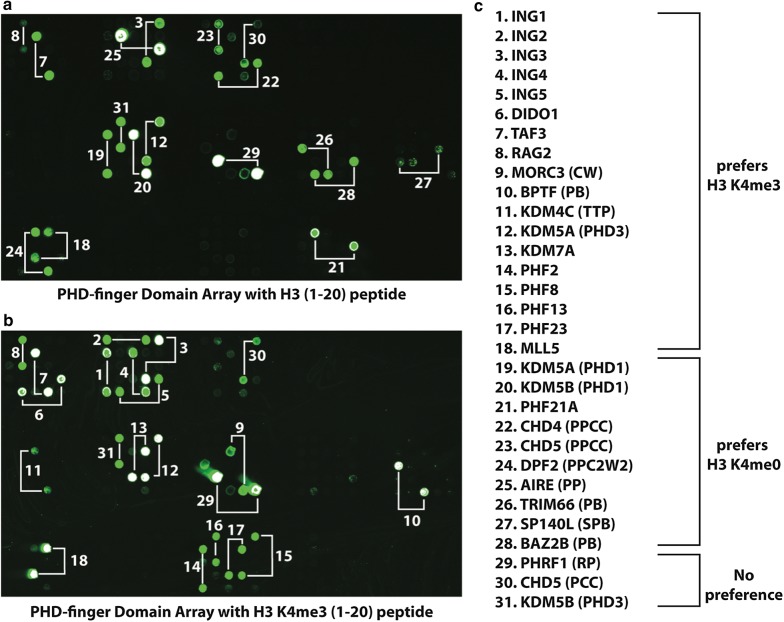Fig. 1.
PHD domain array identifies 31 H3-interacting proteins. a PHD finger domain microarray probed with an unmodified H3 N-terminal peptide (1–20) (see “Methods”). Each positive binding interaction appears as a green circle, with each PHD protein in the array spotted in technical duplicate (indicated by connecting white lines). a PHD finger domain array probed with an H3 (1–20) peptide trimethylated at residue K4 (K4me3). c The 31 H3-interacting proteins are listed by their preference for binding H3 (1–20) K4me3 or K4me0. Each protein listed corresponds to the numbers in a, b. TTP Tandem Tudor domain + PHD, PPCC Dual PHD + Dual Chromodomain, PCC PHD + Dual Chromodomain, CW CW-type Zn-finger, PB PHD + Bromodomain, PPC2W2 Dual PHD + C2W2-type Zn-finger, SPB SAND + PHD + Bromodomain; domains not indicated, one PHD finger. For the entire list of proteins used and the microarray map, see Additional file 1: Table S1

